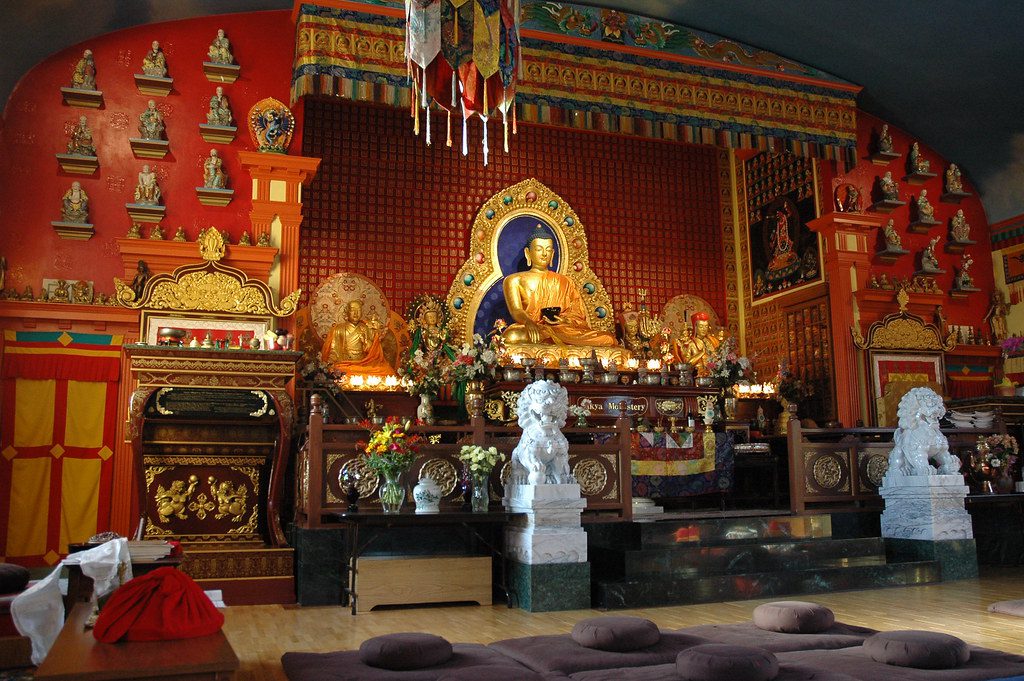Situated in the heart of a racially, culturally, and socioeconomically diverse neighborhood in the nation’s capital, a modest, pale yellow residence calls itself home to the Washington Buddhist Vihara Society.
Founded in 1965 and incorporated as a society the following year under the patronage of the Most Venerable Madihe Pannasiha Mahanayaka Thera (pictured below), the WBV was established as the first Theravada Buddhist monastic community in the United States. Sent by the Asia Foundation on a tour, the Sri Lankan monk happened to be in Washington on Vesak, the Buddhist holiday that commemorates the birth, death, and enlightenment of the Buddha. He celebrated in a park with a few people from the Sri Lankan Embassy and, after conversations with an officer from the embassy, decided to form a temple in the United States.
Ever since its inception, the Vihara has been dedicated to the presentation of Buddhist thought, practice, and culture by identifying as an educational, as well as religious organization. Staffed by resident bhikkhus (monks), these ordained male monastics are available to discuss the various aspects of Buddhism, teach meditation, and offer informal courses; they are also willing and able to give lectures and lead meditation workshops at universities, schools, churches, and other community groups. There has been a succession of scholarly monks who have come to take over the presidency of the Vihara Society and oversee the administration of the temple, each of whom has possessed the skills, knowledge, insight, and commitment to add important improvements to the temple, as well as to the status of Buddhism in America.
The Washington D.C. Buddhist Vihara is dedicated to the presentation of Buddhist thought, practice, and culture. It is an educational, as well as a religious organization. It is staffed by resident Bhikkhus ( monks ) who are available to discuss the various aspects of Buddhism, teach meditation, and offer informal courses. The Bhikkhus are available by invitation to give lectures, as well as meditation workshops at universities, schools, churches, and other community groups.
According to buddhism.blogs.wm.edu. Source of photo: internet





![[HONORARY PROFESSOR OF RECORD FOR PRACTICE AND EMPIRICAL RESULTS – 2024] RECORD HOLDER CHU BAO QUE (BAC GIANG PROVINCE, VIETNAM)](https://uskings.us/wp-content/uploads/2024/05/IMG_0386-218x150.jpg)


